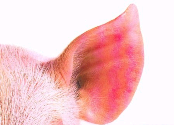Crop models can benefit yield in dry regions

In regions with limited water resources, maximizing crop water productivity is important for producing high yields. A new computer model, AquaCrop, was developed as a way to predict crop water use efficiency, as traditional methods tend to overestimate or underestimate this measure under conditions of water stress.
Crop water use efficiency (WUE, or yield per unit of water used), also known as crop water productivity, can be improved through irrigation management and methods, including deficit irrigation (irrigating less than is required for maximum yields) and supplemental irrigation (irrigating to supplement precipitation so as to avoid crop failure or severe yield decline). Thus, WUE is key for agricultural production with limited water resources.
Policymakers and water resource managers working at all scales need to evaluate the many ways in which cropping systems and the amounts, timing, and methods of both irrigation and fertilizer applications may be changed to improve WUE while meeting yield and harvest quality goals. Field experiments are too costly to address all scenarios, but computer models of crop growth and yield may fill in the gaps if the models are shown to be accurate predictors of WUE.
An international team of experts led by the Food and Agriculture Organization of the United Nations developed an agronomic model called AquaCrop to address the need for modeling of WUE under widely varying conditions around the world and with limited data.
To look at the ability of this and other agronomic models to estimate WUE, a team member with the USDA Agricultural Research Service, Bushland, TX, organized a symposium, "Yield Response to Water: Examination of the Role of Crop Models in Predicting Water Use Efficiency," at the 2007 Annual International meeting of the Agronomy Society of America. Results using several agronomic models were discussed.
Nine papers arising from the symposium are published in a special section of the May–June 2009 issue of Agronomy Journal. The papers explore how four of the simulation models were used to simulate yield, water use, and WUE of cotton, maize (corn), quinoa, and sunflower in North and South America, Europe, and the Middle East. All the models simulated WUE adequately under well-watered conditions, but tended to overestimate or underestimate WUE under conditions of water stress. This limits their usefulness for exploration of deficit irrigation scenarios or rain-fed or dryland situations with less than adequate water.
According to symposium organizer Steve Evett, "Future studies exploring WUE simulation should include evaporation or transpiration measurements in addition to total crop water use measurements. In doing so, management methods that reduce evaporation in favor of transpiration can be studied and models of WUE can be tested and improved."
This examination of WUE estimation by multiple models helps close the gap that exists between what can be done using crop simulation models and what policymakers and managers need from these models in order to develop useful management alternatives for crop selection and timing, tillage systems, and irrigation and fertilization practices. Development of AquaCrop and several other models is continuing and will be guided by the findings of these studies.
The full article is available for no charge for 30 days following the date of this summary. View the abstract here.
Join 26,000+ subscribers
Subscribe to our newsletter to stay updated about all the need-to-know content in the feed sector, three times a week. Beheer
Beheer









 WP Admin
WP Admin  Bewerk bericht
Bewerk bericht